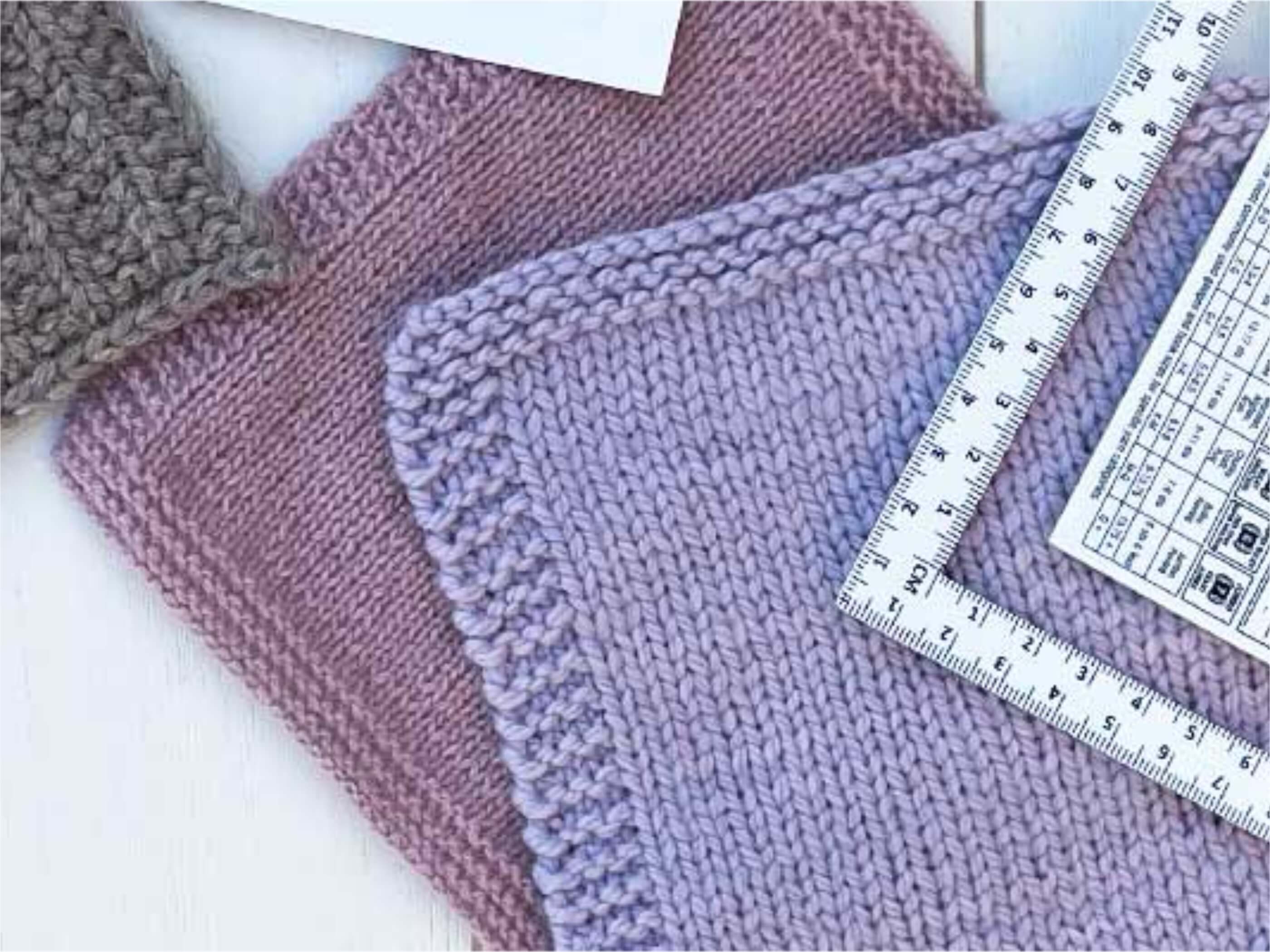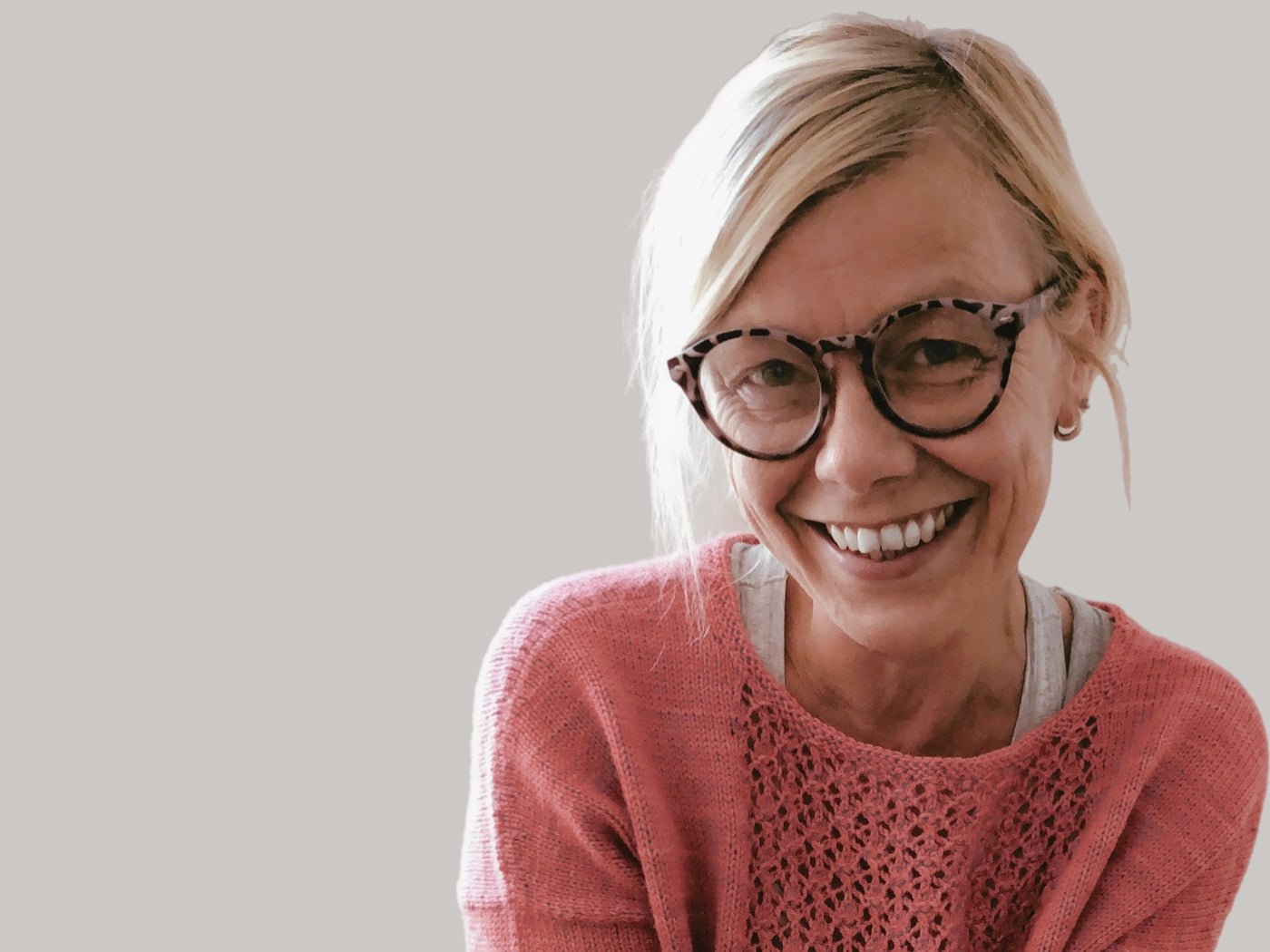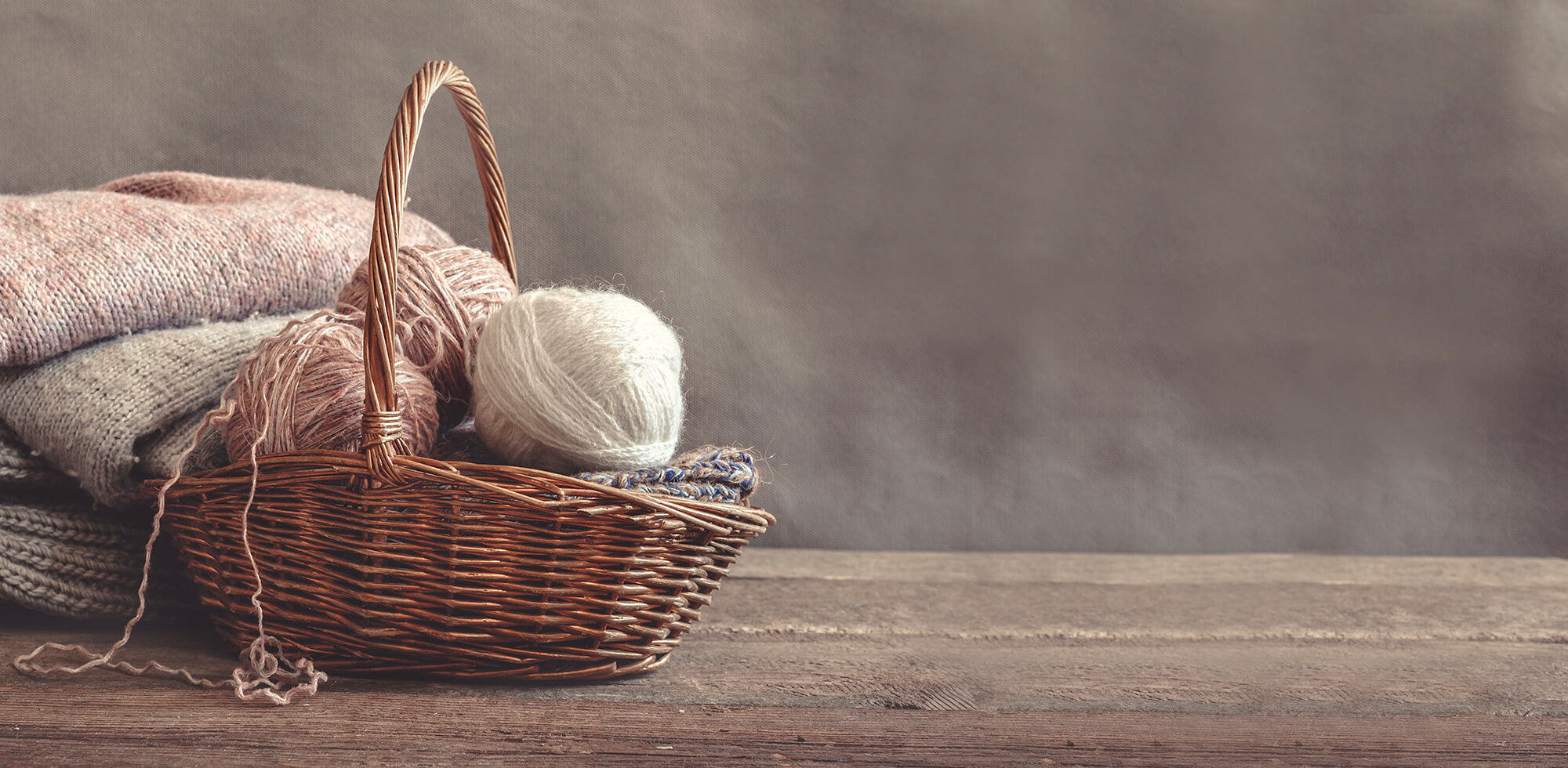By Sandra Sonnenburg
Hej, Åsa - we are so pleased to have you as a guest in our blog interview! Thanks for taking the time.
And congratulations on 10 years of Åsa Tricosa!
Hej!
Thank you and thank you for the invitation!

To celebrate, you will release The Jubilæum Collection as an e-book that will be published throughout the year. The first three patterns have just been released last week . Would you tell us a bit more about the idea behind The Jubilæum Collection?
The collection celebrates 10 years of Ziggurating and other Åsa Tricosa designs. The original idea was to spruce up and polish a good selection of my favourite designs over those years – but I have too many favourites and, perhaps more importantly, so many new ideas that in the end knitters will find 8 new designs and 4 reimagined classics. These are released chapter by chapter over the celebratory year, with each of the 5 chapters presenting 1 Ziggurat sweater and 1 accessory. These patterns are also available individually.
In addition, two bonus patterns are exclusive to the eBook.
One of the two patterns that were released first is Abraxas Vertex made with our wonderful Balayage. Why did you select this particular yarn for the shawl?
I simply love the drape and sleek, silky softness of Balayage which is the yarn I chose also for my Abraxas cardigan. So, I already knew that the stitch pattern, a simple cable pattern, behaved beautifully in Balayage, which offers both interesting and soft texture, movement, and clear stitch definition. It’s the perfect weight too, just slightly heavier than fingering and with this wonderful drape and sheen. (But of course, you know that better than I do!)
And then the colours. The palette is really a bit dangerous for all of the colours are utterly combinable, so one is tempted to play with all of them in all kinds of combinations. Which I did and will continue to do. And other knitters will have fun doing so as well.

What else can knitters expect from the remaining patterns that are part of The Jubilæum Collection? Can you give us a bit of a sneak preview?
Chapter 1 that was just released, fittingly pays homage to my classic and beloved Simple Ziggurat sweater which has received a well-deserved upgrade.
Chapter 2 will present two new designs, the Ziggurat is an entirely new Ziggurat construction, which I’m excited to sneak into this collection before I get a chance to showcase it in Ziggurat Book The Next, which is really what I am working on – the Jubilæum Collection is a bit of a side-track and a way of having some sneaky fun.
The shawl in Chapter 2 is a wafty thing with stripes and an interesting detail stitch that is making a reappearance from another recent shawl. It is quite simple. I can’t wait to release these.
When did you start knitting, and who taught you?
Like most Swedes or Scandinavians of my generation, I learned as a small child, and learned at the able and nimble hands of my mormor (maternal grandmother).
Do you still remember your first finished project?
No, I don’t! But I do remember that, later, not having a clue about gauge or even if I had one, I chose to ignore it because I wanted to combine certain colours (I still remember it being a great colour combination and I wish I had kept a swatch or picture). The resulting sweater had stripes that puckered and others that were oddly loosey-goosey see-through. If I had been more clever, I could perhaps have adjusted the number of stitches to compensate, but… well… I knitted in a very relaxed way, even back then.

You have become famous for your Ziggurat method. What brought you to this special construction? And why are you still obsessed with it?
The ardent desire to find a practical if not foolproof method for knitting sweaters with a tailored fit and where you have a sense – as you are knitting – whether it’s going to fit or not, not at a very distant end of much hard work. I had had one too many unpleasant surprises after knitting bottom up in pieces, blocking and seaming. There is so much work invested before you truly know whether it’s going to be a sweater you wear to death or which ends up at the back of some drawer. To correct or adjust something after the fact on that sort of sweater takes more patience or willingness to delay gratification than I possess. There are many knitters out there – I have seen their beautifully finished garments – knitters, who are much more skilled knitters than I am, and who are excellent at knitting bottom up and seaming beautifully. It’s just not my thing. I also don’t see why knitting should be modelled on sewing, when the knitted fabric lends itself to these fantastic, three-dimensional almost sculpted constructions with just one running strand of yarn. It’s like magic!
And speaking of a single strand of continuously running yarn, the idea is also to keep the yarn intact. Not only on principle or because of the fun challenge. But also because, yes, even knitting seamlessly and topdown, you may realise that it’s not a project that excites you or gives you confidence that it will become a beloved garment. With a Ziggurat sweater, even if you unravel and start over several times, you have all the yarn intact and unbroken.
Additionally, because the critical spot on a sweater is how it fits at and around the shoulders, this spot is something you (I!) want to be confident about early on in the project. When that is settled, it’s quite easy to adjust other things as you go. For example, if on a bottom-up, seamed sweater, you discover that you have placed the waist too high or low, you will have real struggle to undo and redo. When you are knitting topdown you need only to unravel a small section and reknit. Even if you discover after blocking or some wear that the waist is in the wrong place, it’s much less work to fix.
Your designs all have the typical Scandinavian look - functional, clean, but all with fascinating details giving the final “knack” to each design. Where does your inspiration come from?
I’m not sure. Designers get asked this a lot and I usually try to think of something clever to say, but never have a good answer. My design process often starts with a yarn in a particular colour, then while knitting with it, new yarn bases or colours present themselves as possible variants and I go on a hunt. Equally often a design starts with what is missing in my own closet or shawl drawer. I tend to the funky detail more than the traditional one.
Do you have a theory why Scandinavian design and “hygge” have become so popular lately?
If I hear the word “hygge” one more time I may scream…
That said, who can fault the urge for comfort and safety and cosying up with family, familiar and unfamiliar friends and fellow knitters, especially now. It’s a bit like cocooning. I can see the urge. Interestingly, the “hygge” wave crested long before the Covid pandemic hit and the isolation that many have experienced since then. I do have more patience for the appropriation or spread of the so called “hygge” concept in our pandemic times – there are certainly much worse things that can be spread.
Now, the concomitant overuse (often simply cultural appropriation…) of Scandinavian names for designs chafes more. Except when there are unintended hilarious consequences and connotations. Maybe I’m just miffed because finding names for one’s designs is truly difficult – whenever you think you have come up with something fun or unique or clever, you’ll find that it’s been used already, perhaps several times over. I envy Thea Colman (Baby Cocktails) who came upon the clever idea of naming her designs after cocktails and other libations. Endless supply of names and also instant brand recognition. Brilliant.
You have been travelling the world and lived in several places throughout Sweden, the US, Singapore, the UK and Germany, before settling in Denmark. Would you say that your international background influences your designs?
Probably not? If one were unkind, one could say that my designs lack character or style. Oh wait, I do admire the style of what I think of as the Copenhagen woman (there are many styles, but…) – I used to always visit the clothing shop, Masai when in Copenhagen. Stylish, funky, often bold and with a slight feminine nod or shaping without ever being dainty. That sounds good!
What step in the designing process do you find specifically challenging?
Naming. And not having enough time for all the ideas and side shoots that present themselves as I’m working on a project. As a knitter, I tend to want to explore all the possible variants and versions of the design I am currently working on, including different colour schemes. But that doesn’t make sense from a designer or business perspective. I cannot publish five slightly different versions of one design because each variant requires all the work of a new pattern (test knitting, technical editing, revisions, layout, etc). Nor can I justify spending time knitting five versions of the same thing. This is where knitters come to my rescue. I take immense pleasure in seeing the variants knitters make of my designs – their colour choices, clever yarn alternatives, and interesting modifications or additions. They get to play for me, and I don’t have to try all the versions myself.
By what criteria do you select the yarns for your projects? Or - what is it that makes a yarn the perfect yarn for you?
It has to feel good in my hands and on my body and must keep my interest even as I’m knitting large swathes of stocking stitch (I’m a fan of stocking stitch). Which is why I tend to knit mostly with hand-dyed yarns and with yarn from dyers who know how to give just a hint or very slight variegation to the skeins. I love the slight play and shift of colours as the knitting progresses. I knit with natural fibres, and as often as possible with responsibly sourced and organic wool. I tend to return over and over again to yarns that have become favourites over the 10 years.
In your former life, you were part of the academic world. Was there any specific incident or kick-off that made it clear to you that you are a knitter and designer, not an academic?
I wish that were the case! Instead it was a long, slow process of attrition – I was very slow to figure that one out. Once I took the decision, it was as if I was instantly freed from a constrictive harness. I feel so very lucky to be able to live my life as a knitting designer.
Does philosophy still play a role in your knitting life?
No, I don’t think it does. More so maths and architecture, perhaps, even though I have no claim to skill or knowledge of either.
Is there anything you like to do when not knitting? Like - some hobby?
I’m an enthusiastic reader, and a bit of an adventurous cook. I like to plunge my hands into doughs of various kinds. But no, I don’t have any intriguing hobby to reveal. If there were more hours in the day, I’d take up ceramics again. And sewing.
Then again, knitting is not only my work, but also still my favourite hobby. That may seem strange, but I would feel quite amiss if I didn‘t end the day with some knitting on the lady sofa. It’s relaxing also at those times when I might feel the pressure of self-imposed deadlines or when I feel I’m not working fast enough.
Would you like to share some fun fact with us?
I used to be a killer mogul skier and a waiter at Union Square Café in New York. Not at the same time, though.
Thank you so much, Åsa, for joining us for this interview!
It was my great pleasure. Thank you for having me!




